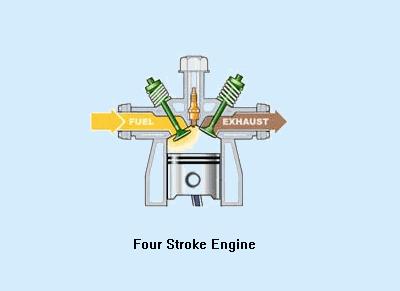Motor Scooters: The Engine
Site Map
What's New
Features
Scooters from Amazon.comYes Man, Scooters in Film
Larry Crowne and scootering
Helmet Free scootering
Scooters in a failing economy
Scooter Economy
Scooter ROI Analysis
Scooter pays for itself
Types of Motorscooters
Why ride a scooter?
Motorscooter FAQ
Buying Scooters Online
Join Our Mailing List
Recommend this site
Scooter Inspiration
Scooter EconomyMotorscooter Advantages
Motorscooter Disadvantages
Motorscooter Books
Motor Scooter Poetry
Business Scooter Travel
Motorscooter Posters
Motorscooters in California
Scooting in the UK
Green Scooting in China
Scooting in Italy
Motorscooters in Iraq
Motor Scooter History
The Ice-Cream Scooter
Pets and Motorscooters
RVs and Motorscooters
Gas vs. Electric Scooters?
Put-putting Pleasures
Recommended Scooters
Scooter Culture
Larry Crowne (film)
Dating and Scooter Culture
Motorscooter Freedom
Motor Scooter Image
Scooter Lib
Back to School on a scooter
Motor Scooter Music
Motorscooter Camping
Types of Motorscooters
Classic Motor ScootersItalian Motor Scooters
The Vespa Motorscooter
The Aprilia Motorscooter
Falcon Electric Scooters
50cc Motorscooters
Kymco Motorscooters
GT Chaunl Scooters
Chinese Motor Scooters
TANK Motorscooters
The RoadRunner Scooter
Roketa Motorscooters
The I-scooter
Moped Scooters
Mopeds
Scooter Choices
Best Scooter DealsThe Performance Scooter
The Luxury Scooter
The Minimalist Scooter
The Classic Scooter
The Basic Scooter
The I-scooter
The Electric Scooter
Stand-up Scooters
The Mobility Scooter
Used Motorscooters
California Legal Scooters
Toy Scooters
Practical matters
Trouble starting a scooterScooters and the Environment
Scooter Return On Investment Analysis
Motor Scooter Repair
The Scooter Commute
Scooter Repair Shops
Scooter Replacement Parts
Vespa Repair
Scheduled Maintenance
Fuel Efficient Driving
Essential Scooterist Kit
Passengers on a Scooter
Motor Scooter parking
Using the Kick Starter
Motor Scooter Batteries
Motor Scooter Stands
Rotating a Scooter
Cargo Storage Issues
Chinese Scooter Alarms
Scooter Roadside Assistance
Affordable Insurance
Scootering in groups
Motorscooter safety
Motorscooter SafetyDriving a Motorscooter
MSF Manual: Your Scooter
Scooters and Potholes
Important, before you drive
Motorscooter Helmets
All-weather Scootering
The Oily Path of Safety
Motorscooter Journal
Motorscooter JournalOff-highway scooter routes
The Scooterdoc
Scooter Choice Ethics
India Shuns Scooters
Left-handed Motorscooters
Other Types of Scooters
Mobility ScootersScooter-inspired Vehicles
Electric Motorscooters
The Three-wheel Scooter

Vespa Service In
Southern California
Two Types of Motor Scooter Engine

Aside from electric motor scooters, two types of engine, the two stroke, and the four stroke, are commonly used in motor scooters. The two-stroke engine used to be the standard. Somewhat simpler to produce, and with slightly greater accelleration, it nonetheless has significant disadvantages. Although the two-stroke engine is still used in some smaller scooters (see minimalist scooters), the four-stroke engine has, since 2004 taken over in the scooter arena for many good reasons. In reliability, fuel economy, emissions, and longevity, the four-stoke engine is superior. Two-stroke engines also require more maintenance, particularly after periods of disuse. You can easily tell which engine is which by sound. The two-stroke engine buzzes more rapidly and sounds tinnier. Most chainsaws use two stroke engines. You probably already know the sound.
The Four-Stroke Engine
All of the four-stroke scooter engines are built on the same design Honda perfected with their 35cc back in the very early 60's. It has been lauded as the nearly perfect engine design for economy and longevity.
The New Zealand electric bike that folds into a shoulder bag.
Some small changes have been made from one manufacturer to another but the basic proportions of bore to stroke, the head design (combustion chamber), the valve placement, are all the same. Contracted for Chinese manufacture by Honda in the 1980's and the subject of much litigation, the GY6 engine, in 50cc, 125cc and 150cc flavors, is the descendant of this earlier engine, has become the work horse of the industry, and is currently manufactured by over 20 companies in China alone. One interesting aspect of this engine design is it is capable of nearly 12,000 RPMs or even more.
Where low-power 50cc scooters with a top speed of 30 mph require no license, or are otherwise exempted from regulations applicable to larger vehicles, restrictions are placed upon those scooters to prevent them from going more than the designated speed. This does waste fuel and reduces accelleration. For a step-by-step procedure for de-restricting the engine, see De-restricting a 50cc Scooter.
Bookmark this page to: